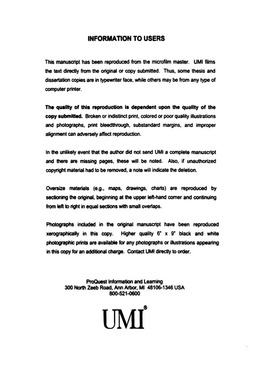| dc.contributor.advisor | Vaughn, Courtney, | en_US |
| dc.contributor.author | Kennedy, Heidi Alexandra. | en_US |
| dc.date.accessioned | 2013-08-16T12:18:23Z | |
| dc.date.available | 2013-08-16T12:18:23Z | |
| dc.date.issued | 2001 | en_US |
| dc.identifier.uri | https://hdl.handle.net/11244/372 | |
| dc.description.abstract | The cross-case analysis is supported by literature on organizational culture, change and life cycle. The importance of pioneers and the context for social change are discussed along with their impact on the diffusion of innovation. The case study suggested that the factors of time and organizational culture act as barriers for organizational change. Without increased access to positions of power, women lack the critical mass to influence reiterated norms that better serve the community in a new social context. Leadership within colleges and universities must remain conscious of the status of women and be proactive in supporting their advancement to administrative positions. | en_US |
| dc.description.abstract | A cross-case analysis was constructed based on interviews with five women who founded a committee in 1971 to advance women in higher education leadership. The members of the committee revealed that while they used their roles as change agents to help increase the numbers of women in higher education, their efforts were hindered by a perpetuated model of male professional development and a lack of equality of condition. The committee promoted change through educational efforts such as fiscal training, consciousness raising, and mentoring. In their reflection on the change process, they suggested that a success of a movement relied on effective use of inside/outside organizational communication and strategic multiple impacts. | en_US |
| dc.description.abstract | Despite career development efforts for women in higher education leadership, women still lag behind men at the executive levels at U.S. colleges and universities. Balanced representation promotes a variety of effective leadership styles and lifestyles to students, faculty, and staff. As women are encouraged and supported to climb to higher levels of leadership, they may role model to future generations of men and women that opportunities for professional development are attainable and equitable in higher education today. The purpose of this study was to explore answers on the persistence of the gender gap and how to bring about organizational change. A phenomenological case study asked the research questions of a select group of individuals who worked to advance women in higher education. | en_US |
| dc.format.extent | viii, 117 leaves ; | en_US |
| dc.subject | Education, Administration. | en_US |
| dc.subject | Sociology, Industrial and Labor Relations. | en_US |
| dc.subject | Education, Higher. | en_US |
| dc.subject | Women's Studies. | en_US |
| dc.subject | Universities and colleges United States Administration. | en_US |
| dc.subject | Women college administrators United States. | en_US |
| dc.title | The advancement of women in higher education leadership. | en_US |
| dc.type | Thesis | en_US |
| dc.thesis.degree | Ph.D. | en_US |
| dc.thesis.degreeDiscipline | Department of Educational Leadership and Policy Studies | en_US |
| dc.note | Major Professor: Courtney Vaughn. | en_US |
| dc.note | Source: Dissertation Abstracts International, Volume: 62-10, Section: A, page: 3313. | en_US |
| ou.identifier | (UMI)AAI3028800 | en_US |
| ou.group | Jeannine Rainbolt College of Education::Department of Educational Leadership and Policy Studies | |
